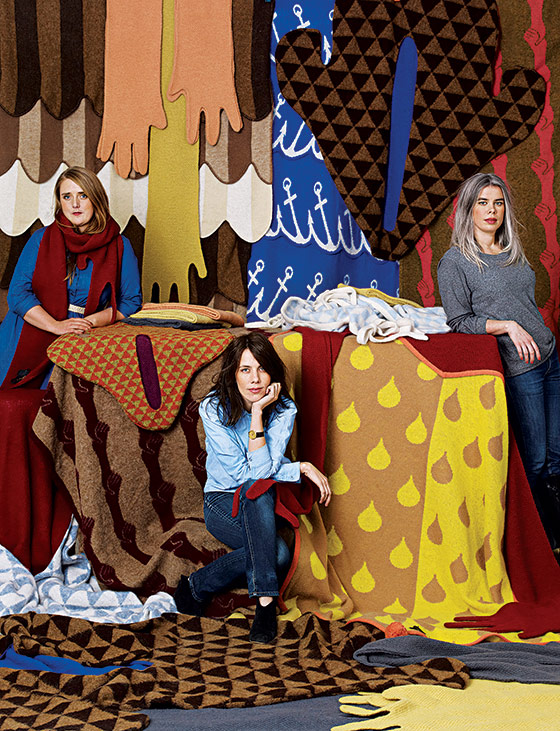
In an era when design stars are given TV shows, pal around with Brad Pitt, and collaborate with megaretailers, it’s not immediately clear why any young hopeful would want to join a design collective. Doing so requires putting the name and the needs of a group before one’s own, obscuring any clear path to individual fame. In the past, collectives often had a kind of anti-commercial sheen, even when they were selling things. In the sixties, groups like Archigram and Ant Farm used design and architecture to further shared countercultural agendas. Similarly, Ettore Sottsass founded the Memphis collective in the eighties as a kind of postmodernist manifesto. But when the Droog collective came along in 1993, its more practical, less philosophical mission—promoting talents too new and obscure to make much of an impact on their own—marked a turning point for design collectives. These days, belonging to a collective largely appeals to the under-35 set, who see it as a way to pool their resources. (The cost of exhibiting at career-making trade fairs like Milan’s Salone Internazionale del Mobile can run $10,000 or higher.) With the buyer more frequently wanting a “narrative” behind his or her teapot, the fact that it was made by seven 24-year-olds in Helsinki also provides a built-in selling point. And now that young furniture and product designers are increasingly becoming manufacturers and retailers too—using the web to sell products directly to stores and customers—having more hands and minds around helps when it comes to product development, client relations, and fulfillment, not to mention picking up the slack when half of the collective is hungover the morning after a studio party.
Vík Prjónsdóttir
Based in: Reykjavik and New York City
vikprjonsdottir.com
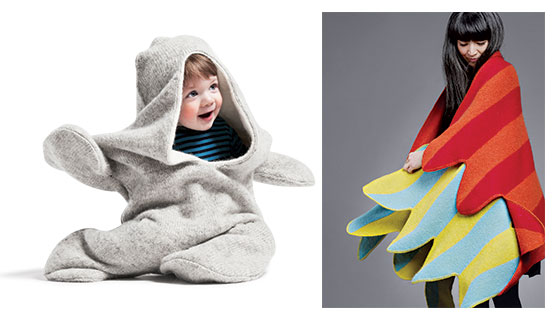
In 2005, with the Icelandic wool industry in decline, a group of product and fashion designers known as Vík Prjónsdóttir decided to join forces with a local knitting factory in an attempt to show how the material could be used in a more modern way. “The factory was making typical fisherman sweaters, socks, and the like,” says co-founder Thury Rós Sigurthórsdóttir. “We thought Icelandic wool could be revitalized with more contemporary designs.” They decided to base all of their eccentric patterns on stories or myths, often traveling to remote parts of Iceland for inspiration. Among their first products was a wool playsuit with flipperlike hands and feet, based on an old Icelandic tale about a fisherman who unknowingly married a seal. Later, while camping by a fjord, they designed a blanket resembling giant bird wings in homage to a mythical eagle said to preside over the nearby mountains. Eight years later, the country’s wool industry has “exploded,” says Sigurthórsdóttir—thanks in part to their efforts, plus the boost to the buy-local movement in Iceland provided by the economic crisis—and Vík Prjónsdóttir’s reputation has grown along with it.

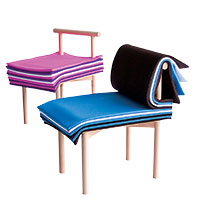
6474 Design
Based in: Tokyo
6474design.com
In March of last year, just a month after the Japanese design collective 6474 debuted its first furniture collection, one of its pieces went viral online: a low wooden-frame chair threaded with a stack of thin neoprene cushions that could be flipped like the pages of a book, allowing users to control the color and thickness of the seat and backrest. The design (right) perfectly embodied 6474’s ethos, combining typical, simple Japanese proportions with a dose of playfulness. “We’re really inspired by the kind of surprises and humor that anyone can relate to,” says co-founder Tetsuo Shibuya.
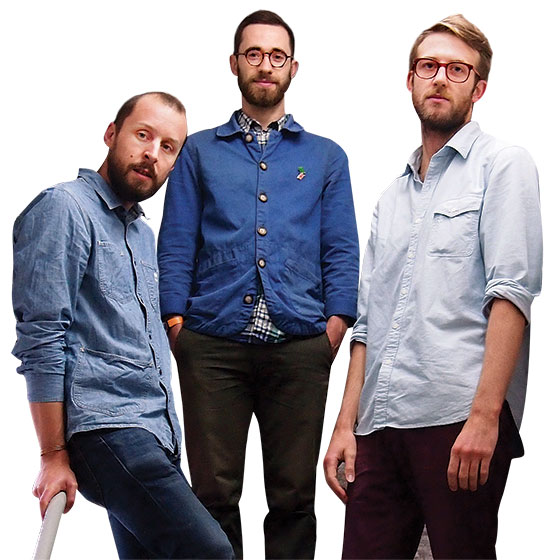
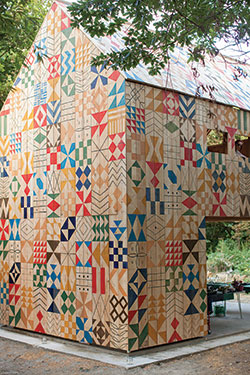
Nous Vous
Based in: London
nousvous.eu
Before they became one of London’s most sought-after young illustration-and-graphics firms, the trio behind Nous Vous were 22-year-old design-school grads bumming around the indie arts scene in Leeds, making posters for local bands and exhibiting their cartoonish drawings and prints in galleries and cafés. They soon sniffed each other out and began collaborating in 2006. “Our current personalities kind of formed in unison,” says member Jay Cover. “And as a group, larger projects that would be difficult for any one of us to do alone have become possible.” Now based in London, Nous Vous’s practice revolves around riffing off one another’s ideas, as exemplified by one of their more well-known projects: a huge pile of painted-wood sculptures they created for a Tokyo Police Club album cover. They do keep some work separate (such as member William Edmonds’s budding splatter-paint pottery line, Some Wow), but as a group, they’ve scored a slew of logo and illustration commissions, as well as their most ambitious project to date, the cedar cabin pictured at right—whose hand-painted, “jolly”-looking, graph-paper-inspired exterior they designed for architects Studio Weave—that stands in Dartford’s Central Park.
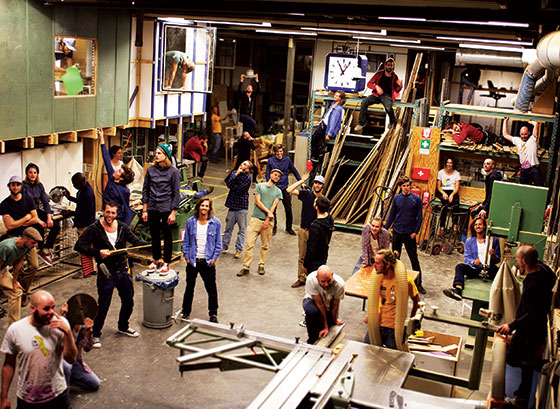
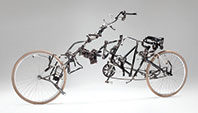
Collaboration O
Based in: Eindhoven, The Netherlands
collaboration-o.nl
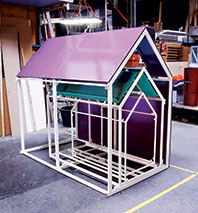
The 6,000-square-foot studio shared by the fourteen designers who make up the Dutch collective Collaboration O functions like a kind of utopian commune—one in which members own shares of costly workshop machinery, rotate through roles like financial officer and concierge, and bat around ideas over big group lunches and dinners. In reality, of course, working with so many creatives in such close quarters can be “an emotional roller coaster,” says Niels Hoebers, a stop-motion animator who helped found the multidisciplinary group in 2008, when most of its members were still studying at the nearby Design Academy Eindhoven. “The day after we throw a party, half of the collaboration is lying in bed with a hangover while the rest are cleaning up. And when people are stressed, everyone else can feel it.” But the arrangement definitely has its advantages, says Hoebers: Working in such close quarters allows for opportunities that wouldn’t occur otherwise. When a client approaches one collective member with a large commission, he or she will pull in others with relevant skills; several are currently designing freestanding rooms for an upcoming hotel, for instance. And because the members’ skills span so many different disciplines, from carpentry to interaction design, they like to swap specialty work from time to time. “I recently made an animation for someone in the collective, and in exchange, he’s making me a showcase cabinet,” says Hoebers. “It feels like a little village.”
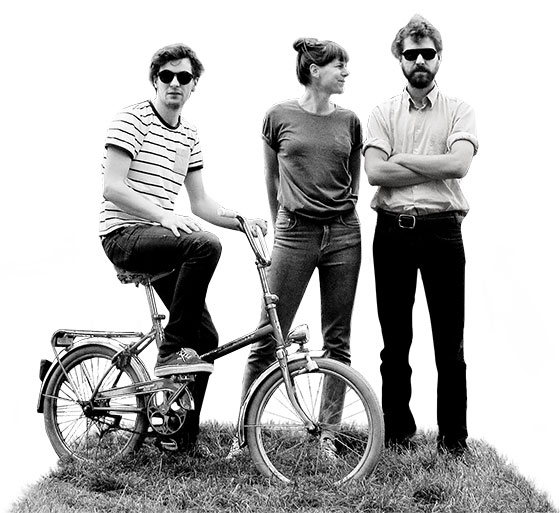
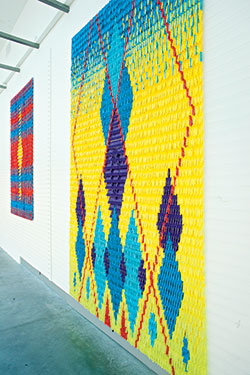
We Make Carpets
Based in: Amsterdam and Eindhoven
wemakecarpets.nl
Last year, designers Marcia Nolte and Stijn van der Vleuten, along with artist Bob Waardenburg, were invited by the Taragalte Festival to spend two weeks camping in the Moroccan desert while building one of their signature installations: a “carpet” made from nearly 1,000 plastic bottles, arranged in a mind-bogglingly intricate pattern in the sand and disassembled, like all their works, as soon as the event was over. (The impermanent nature of these rugs means that you won’t be able to buy one for your living room, but Waardenburg hints, “We’re currently working on ideas for usable carpets.”) The trio have made similar rugs from Band-Aids, candy bars, plastic forks, and dish sponges, among other objects; for this month’s Dutch Design Week, they covered 5,000 square feet in folded A4 paper. After beginning their part-time collaboration four years ago, explains Waardenburg, “we chose to make only carpets because it’s a handy medium with which to tell our story—we try to elevate materials that have lost their aesthetic or functional value, that are so common people don’t bother to look at them anymore.” Installation can take three to six twelve-hour workdays to complete. The biggest challenge of such meticulous work, Waardenburg says, is maintaining concentration, with which music is a huge help. “We try to always thank Paul Simon in interviews for making Graceland,” he says. “It’s our beacon of light in darker hours.”
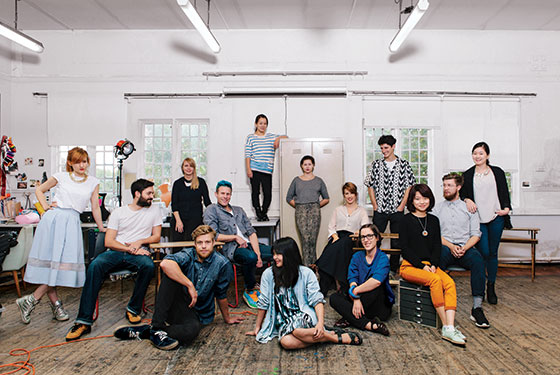
Works
Based in: London
theworkscollective.com

“There are so many of us, with our fingers in so many pies,” says Lola Lely, a founding member of the cadre of recent Royal College of Art graduates known as the Works collective. The group’s twenty-odd twentysomethings include textile, product, and graphic designers who all run independent practices but meet up to share resources and plan events, like a recent window installation at Christie’s. “These days, it’s not always the case that you graduate and get a job or design a product and hope it will get manufactured,” explains Lely. “Those models aren’t working anymore. We’re finding new ways to create opportunities for ourselves.” One such opportunity came about during September’s London Design Festival, when design curator Ambra Medda scooped up several of their pieces for her new online store, L’ArcoBaleno. Works has also been invited to take over the ground floor of Heal’s, one of London’s biggest and oldest home-furnishing stores, this coming February—a feat its individual members would have been unlikely to achieve on their own. Working with young designers might ordinarily be a risk for such an established retailer, suggests Lely, but teaming up with a collective offers an added bonus. “Department stores know that if people are going to spend money, they want something different, something extra. So that’s where collectives like ours come in.”
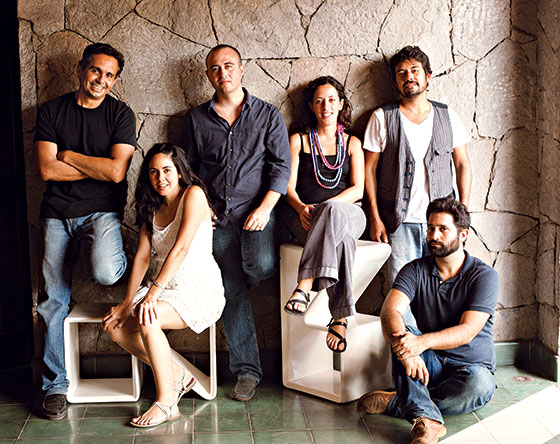
Carrot Concept
Based in: San Salvador, El Salvador
thecarrotconcept.com
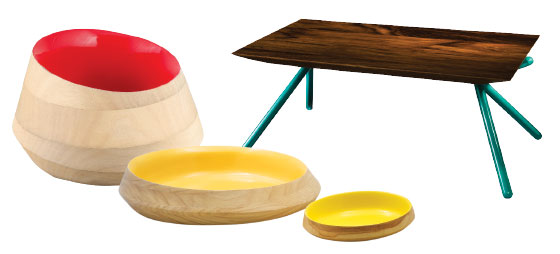
The Carrot Concept house, located in San Salvador’s artsy San Benito neighborhood, has become home base for the city’s burgeoning design scene since it opened last year. With a furniture store and an organic café sharing its façade and five different design studios located upstairs—all converging on a charming back garden used by customers and collective members alike—the house was conceived as a way to raise the profile of El Salvador’s hidden design talent, both within the country and internationally. Explains Harry Washington, who runs a furniture and interior-design practice there with his wife, Claudia, called C&H Washington, “Maybe someone just comes here for a coffee but ends up getting a glimpse at what the studios are working on.” The couple founded Carrot Concept along with two architects and two graphic designers, who not only run the house’s eponymous store but also curate and manage the global distribution of a colorful line of furniture created by their peers and manufactured by local artisans; it debuted at the Wanted Design show in New York this past May, where it was picked up by stores like Property and Luminaire.